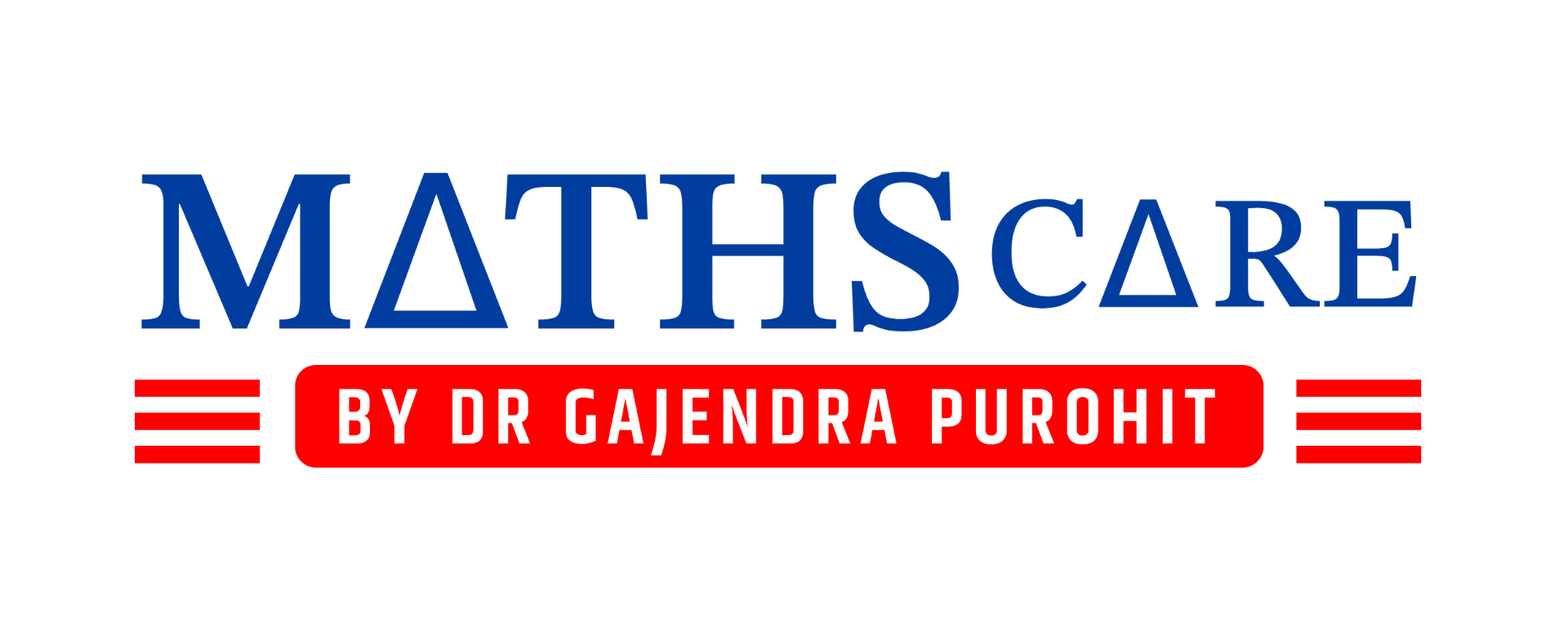IIT JAM Mathematics 2025: Myths vs Facts
The IIT JAM (Joint Admission Test for Masters) is a prestigious entrance exam that provides access to MSc and integrated PhD programs at top-tier institutions like IITs, NITs, IISc, and IISERs. Students often encounter numerous myths and misconceptions about the exam, its difficulty, and what it takes to succeed. These misconceptions can sometimes create unnecessary anxiety and hinder effective preparation. In this blog, we’ll break down these myths and reveal the facts, helping you gain a realistic perspective on the IIT JAM Mathematics exam

About IIT JAM Mathematics
IIT JAM Mathematics is designed to test a candidate’s understanding and application of mathematical concepts at the undergraduate level. The exam opens doors to MSc and PhD programs at India’s leading institutions, including IITs, NITs, and IISc. It covers critical areas of mathematics, such as Real Analysis, Multivariable Calculus, Linear Algebra, and Differential Equations, ensuring that candidates have a strong foundation in the subject.
The exam is structured to assess not only knowledge but also analytical thinking and problem-solving skills. While competitive, IIT JAM offers a clear pathway to advanced studies and career growth. Understanding the exam structure and syllabus is the first step toward a successful attempt.
Dates and Important Deadlines
For those planning to take IIT JAM Mathematics 2025, it’s crucial to stay informed about important deadlines. The rectification window for application corrections closes on November 18, 2024. Missing deadlines can have serious implications, potentially affecting your eligibility. Ensure you mark all critical dates, from admit card issuance to the exam date, on your calendar. Staying updated on these deadlines can help you avoid last-minute stress and focus on your preparation.
Eligibility Criteria
Myth: Only candidates with a flawless academic record and high percentages are eligible for IIT JAM.
Fact: IIT JAM is open to students with a Bachelor’s degree in science with a minimum of 55% marks (or 5.5 CGPA) for general/OBC students, and 50% marks (or 5.0 CGPA) for SC/ST/PwD candidates. The exam aims to include students from diverse educational backgrounds, provided they have a strong understanding of the subject. Thus, while good academic preparation is necessary, a “perfect academic record” isn’t a requirement for applying.
This inclusivity offers a chance for students who are passionate and willing to put in the effort. Clearing the eligibility criteria is only one part of the process; the key to success lies in dedicated study and strategic preparation.
IIT JAM Mathematics Syllabus
Myth: The syllabus for IIT JAM Mathematics is too vast and unpredictable, making it nearly impossible to cover everything.
Fact: The IIT JAM Mathematics syllabus is well-defined and aligns closely with undergraduate mathematics topics. Core areas include Real Analysis, Multivariable Calculus, Linear Algebra, Differential Equations, and Algebra (Groups). The syllabus is designed to test foundational understanding rather than obscure or niche topics, which means that with organized study and smart prioritization, candidates can thoroughly prepare for the exam.
The syllabus may seem broad, but focusing on key topics and practicing past papers will make it manageable. Breaking down the syllabus into smaller sections and covering one topic at a time helps in building a strong foundation without feeling overwhelmed.
Important Topics in Mathematics
Myth: Every topic in the syllabus has equal weightage in the exam, so candidates must prepare all topics equally.
Fact: Certain topics in IIT JAM Mathematics have a higher weightage and are frequently tested. High-priority topics include Real Analysis, Linear Algebra, and Differential Equations. Understanding these high-weightage areas allows students to allocate study time more effectively, focusing on sections that are likely to have a significant impact on their score. Covering the entire syllabus is important, but prioritizing key topics improves efficiency and increases the chances of scoring higher marks.
This strategic approach helps in maximizing performance without the need to exhaustively cover every topic with equal depth. By focusing on high-weightage areas, students can manage their time better and gain confidence for the exam.
Myths vs Facts
MSc Admissions in IITs, NITs, IISc, etc.
Myth: Admission to prestigious institutes like IITs, NITs, and IISc is impossible for a BSc graduate due to high competition. Only students with elite qualifications can crack it.
Fact: While admissions to institutions like IITs, NITs, and IISc are indeed competitive, they are achievable for determined BSc graduates with the right preparation. The competition is intense, but it is designed to evaluate knowledge, analytical ability, and problem-solving skills, not just elite academic qualifications. Candidates from varied educational backgrounds crack IIT JAM every year by focusing on understanding the subject deeply, practicing regularly, and refining their problem-solving speed and accuracy.
Clearing IIT JAM is challenging, but by following a disciplined study plan and concentrating on key topics, even BSc graduates can secure admission. The IITs, NITs, and IISc have admissions criteria that focus on merit rather than limiting opportunities to a particular group. Hence, aspirants with a strong foundation and commitment can achieve their goals despite the competitive environment.
Scholarships for MSc, PhD, and Other Integrated Programs
Myth: There is no financial support available for MSc and PhD students, making it financially unfeasible for many.
Fact: Top institutions offer scholarships and financial aid to deserving candidates pursuing MSc, PhD, and integrated programs. Many students receive scholarships based on merit or financial need, covering tuition fees and, in some cases, even providing stipends. This support helps students focus on their studies and research without financial strain.
Well-Defined Course Structure and Academic Career
Myth: IIT JAM courses only prepare students for academic careers, limiting their career opportunities to teaching or research.
Fact: IIT JAM Mathematics has a well-rounded course structure that develops critical thinking, analytical, and problem-solving skills, making graduates highly employable across various sectors. Besides academia, students often find opportunities in fields like data science, finance, analytics, and technology, proving that the skills gained are versatile and in demand across industries.
Internship Opportunities
Myth: MSc and PhD students lack industry exposure and have minimal internship opportunities.
Fact: Many institutions encourage MSc and PhD students to participate in internships, collaborating with industry partners and research labs. These internships provide hands-on experience, bridging the gap between theoretical knowledge and practical application, which enhances employability and professional growth.
Placement Opportunities
Myth: There are limited placement opportunities for MSc Mathematics graduates, so pursuing IIT JAM has limited career value.
Fact: Graduates of IIT JAM Mathematics often find ample placement opportunities in high-demand sectors like finance, data science, analytics, and research. Top companies seek candidates with strong mathematical skills, and graduates from IITs and IISc are highly valued for their expertise.
Growth, Development, and Environment
Myth: MSc programs are highly competitive, with minimal collaboration or growth opportunities.
Fact: IIT JAM institutions foster a supportive environment focused on collaboration, personal growth, and skill development. The challenging coursework encourages students to work together, develop critical thinking, and engage in research, promoting a holistic growth environment.
Cutoff and Difficulty
Myth: The IIT JAM Mathematics cutoff is unrealistically high, making it accessible only for the “best of the best.”
Fact: While the IIT JAM Mathematics exam is challenging, it’s designed to be fair and achievable with a focused approach. The cutoff varies each year based on factors such as the number of applicants and exam difficulty. By understanding the exam pattern, focusing on high-weightage topics, and practicing mock tests, students can perform well and meet the cutoff.
The exam’s difficulty lies in consistent preparation, but with the right strategy, aspirants can reach or exceed the cutoff.
Conclusion
IIT JAM Mathematics 2025 offers a prestigious pathway for students aiming to pursue advanced studies and career opportunities in mathematics and related fields. By debunking common myths and understanding the facts, candidates can prepare with clarity and confidence. From scholarships to career prospects, IIT JAM provides numerous benefits for determined aspirants. Embrace the truth, discard the myths, and set yourself up for success in IIT JAM Mathematics.
IIT JAM FAQS
Documents to Upload
Upload your recent passport-size photo, signature, and scanned copies of your 10th standard mark sheet, and category/disability certificates if applicable.
Photo Upload Issues
If your photo doesn’t meet specifications, your application will be marked “DEFECTIVE.” You’ll be notified via email or SMS to rectify the issue.
Signature Upload Issues
Similar to the photo upload, a defective signature upload will require correction. Notifications will be sent to you.
Selection of Examination Cities
Choose three exam cities in order of preference. If your first choice is unavailable, the other two will be considered. The JAM committee may adjust city allocations based on operational constraints.
Applying for Two Papers
A single form allows the selection of two papers. No need to submit two separate forms.
Adding a Second Paper After Submission
Log in to the JAM portal, select “Add Paper,” choose your second paper, and pay the applicable fees. A maximum of two papers can be taken.
BEST OFFERING COURSES FOR YOU
BEST BOOKS FOR IIT JAM/ CSIR-NET
BUY BOOKS ON OUR APP
RECENT POSTS

IIT JAM Mathematics Syllabus 2025


CUET PG 2025 Preparation Strategy












